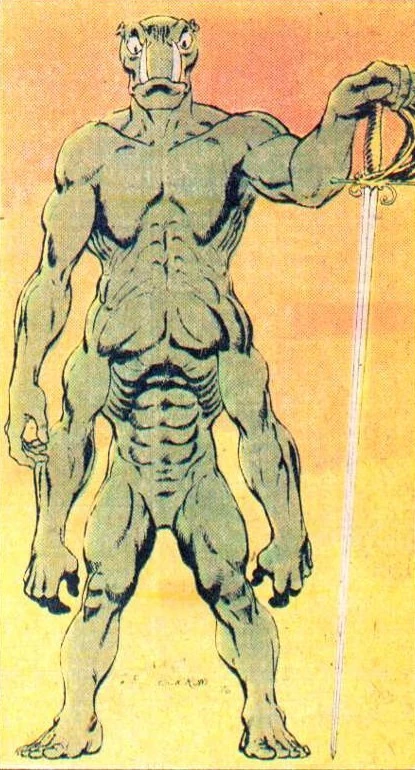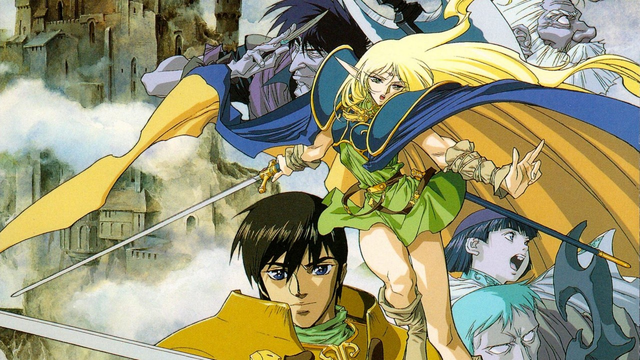On a theory level, I've been thinking about combat in tabletop RPGs, and how to handle it. While I actually do find character builds and tactical combat in games like D&D 3.+ compelling when I've done a sufficient amount of research into them, I prefer that style of play in videogames, not tabletop. I've come to respect that style of game design a bit more again. By integrating all of the mechanics together, a relatively crunchy game can be made much more streamlined (as opposed to many of the overly complex bolt-on mechanics of D&D 2e and other games from that era, see Star Frontiers Advanced which I should but probably won't write a review of bc tbh I was a little disappointed that my Gamma Knights review didn't make it on the thought eater humpday blogarama). However, it also becomes much less modular, so unless you want to redesign the whole game any time you want to hack something, you're pretty much stuck with what you've got. Which is great if you lack the time, creativity, or general inclination to make stuff yourself. But at that point, I'd rather just play a videogame.
Anyway, that was an unintended tangent, this is a bit stream of consciousness. I've been thinking about this stuff because of games like TNT and Gamma Knights. I don't necessarily prefer opposed rolls to hit vs. armor type combat systems, but I do find them interesting, and I wish more OSR people would look to TNT for inspiration even if they aren't interested in switching systems. I like how in TNT ranged weapons have fewer damage dice but can bypass the opposed roll, or how rolling a six on any damage die gives 1 spite damage that also bypasses opposed rolls, such that a sufficient number of weak monsters can still make a mark on player characters, without necessarily being an hyper-deadly game. Likewise, while I generally don't like character builds and tactical crunch in tabletop, I do like the idea of that being a differentiation between regular PCs and mechs or power armored PCs. If I were playing a whole mech game I wouldn't bother, I'd just reskin any other game, but there is something kind of appealing to me that I can't fully articulate about the different sensors and power management and force fields and computerized systems in Gamma Knights (or maybe it's more generally related to the point I will be making below, which is supposed to be the main point of this meandering post).
That being said, in practice, I almost always prefer to minimize combat, or add saving rolls or other non-combat mechanics into combat scenarios. I don't find GMing combat fun, I only kind of find being a PC in combat fun, if the GM did a good job setting up the encounter, and anecdotally, I find that a lot of the fun leaves the table when things get too solely combat-driven. It could just be that I'm not a good combat GM. Or it could be that good combat encounters should include non-combat actions, and I'm doing it correctly after all.
While I haven't played it, I find the Pyrrhic Weaselry, Or At What Cost? system so intriguing because it's willing to defy the norm of combat systems in an otherwise D&D-style game space, and is really conscientious of fictional positioning and how to leverage that to create interesting encounters. I think the term fictional positioning gets thrown around a lot by storygame people, but frankly I've found that many of the people who sling that term around don't really understand what it means, or haven't thought it through all the way, just making common sense needlessly pretentious (this statement is not intended as an attack on all storygamers or all storygames! I'm not one of those obnoxious anti-storygame people! In fact there are many things I like about FATE and PbtA!). Anyway, If you really want to understand what fictional positioning means, read Pyrrhic Weaselry (we've had some good conversations about it on the underutilized SWORDDREAM_unofficial subreddit). I do genuinely think FATE and PbtA do good fictional positioning as well, and also deserve credit for abstracting away combat as not fundamentally different from other mechanics; it's more that I think other people sometimes reduce it to something less meaningful.
Despite all of what I just said, the idea of a combat-less system just seems... wrong. I want a combat system! I don't care that I generally don't like it, or that my players generally don't like it, or that I usually try to minimize its use as much as possible, I still want it there! In small doses it's nice. Just knowing it's there adds to the experience.
That got me thinking though, while there are certain things I don't like about FATE, one thing I really do like about FATE is how it re-constructs tactical combat in a way that doesn't remove combat mechanics altogether, but abstracts them into different kinds of actions that play into the fictional positioning system (aspects). Skills can be designed flexibly for any setting, and can be used as either an attack, defense, to overcome an obstacle, or one other thing that I'm forgetting off-hand because I haven't played it in a while and also I may be getting some of this terminology wrong. That in tandem with the two kinds of stress tracks (one more physical, one more mental, I think called Will) and the ease with which one could hack in more stress tracks, allows you to have your cake and eat it to when it comes to tactical combat vs. fictional positioning. I actually think it's a shame how FATE has to some extent become a victim of its own success, because personally I think FATE is much more interesting, flexible, and DIY than PbtA, which I think has become (or by its nature is) really just the D&D of storygames (for better and worse), but that's also post for another day (I should really be keeping track of these tangents...).
So I don't have a concrete idea at the moment, but I'd like to think about how to, rather than remove combat altogether in games like TNT and OSR, abstract it across other mechanics or situations in ways that are both tactically and fictionally interesting. How could one bend combat to social conflict, or fire fighting, or ghost hunting with a proton pack, or to cooking a dish / line cooking as a team during the dinner rush? I suspect creating a FATE bolt-on to TNT or OSR, or a TNT or OSR-inspired hack of FATE, will play a part in this, but I don't want to commit to anything yet.
I've created TNT character types such as the War Dogs or Warlord that add more fictional-positioning Saving Rolls to combat, but I'd like to maybe try coming up with some character types or general mechanics that go the other way, adding combat-like mechanics to scenarios that are not combat per se. The idea isn't so much to increase the overall amount of combat, but to smooth out the delineation between combat encounters and everything else.
Fitting for this post, I'm going to end on yet another tangent that is dubiously related to the intended point of this post. I've also been thinking about a Poker combat-type mechanic for TNT, inspired partially by the poker mechanics in Deadlands. Because of how TNT uses D6s, I think TNT lends itself better to this kind of mechanic than OSR, but there's no reason why it couldn't also be bolted on to OSR. But again, that's a post for another day...


















